Moore George

George Augustus Moore (24 February 1852 – 21 January 1933) was an Irish novelist, short-story writer, poet, art critic, memoirist and dramatist. Moore came from a Roman Catholic landed family. He originally wanted to be a painter, and studied art in Paris during the 1870s. There, he befriended many of the leading French artists and writers of the day. As a naturalistic writer, he was amongst the first English-language authors to absorb the lessons of the French realists, and was particularly influenced by the works of Émile Zola.[1] His writings influenced James Joyce, according to the literary critic and biographer Richard Ellmann,[2] and, although Moore's work is sometimes seen as outside the mainstream of both Irish and British literature, he is as often regarded as the first great modern Irish novelist. George Moore was born in Moore Hall, near Lough Carra, County Mayo.[3] The house was built by his paternal great-grandfather—also called George Moore—who had made his fortune as a wine merchant in Alicante.[4] The novelist's grandfather was a friend of Maria Edgeworth, and author of An Historical Memoir of the French Revolution.[5] His great-uncle, John Moore, was president of the short-lived Republic of Connaught[6] during the Irish Rebellion of 1798. The novelist's father, George Henry Moore, sold his stable and hunting interests during the Great Irish Famine, and from 1847–1857, served as an Independent Member of Parliament (MP) for Mayo in the British House of Commons.[7] George Henry was renowned as a fair landlord, fought to uphold the rights of tenants,[8] and was a founder of the Catholic Defence Association. His estate consisted of 5000 ha (50 km²) in Mayo, with a further 40 ha in County Roscommon. As a child, Moore enjoyed the novels of Walter Scott, which his father read to him.[9] He spent a good deal of time outdoors with his brother Maurice, and also became friendly with the young Willie and Oscar Wilde, who spent their summer holidays at nearby Moytura. Oscar was to later quip of Moore: "He conducts his education in public".[10] His father had again turned his attention to horse breeding and in 1861 brought his champion horse, Croagh Patrick, to England for a successful racing season, together with his wife and nine-year old son. For a while George was left at Cliff's stables until his father decided to send George to his alma mater facilitated by his winnings. Moore's formal education started at St. Mary's College, Oscott, a catholic boarding school near Birmingham where he was the youngest of 150 boys. He spent all of 1864 at home, having contracted a lung infection brought about by a breakdown in his health. His academic performance was poor while he was hungry and unhappy. In January 1865, he returned to St. Mary's College with his brother Maurice, where he refused to study as instructed and spent time reading novels and poems.[11] That December the principal, Spencer Northcote, wrote a report that: "he hardly knew what to say about George." By the summer of 1867 he was expelled, for (in his own words) 'idleness and general worthlessness', and returned to Mayo. His father once remarked, about George and his brother Maurice: "I fear those two redheaded boys are stupid", an observation which proved untrue for all four boys.[12] In 1868, Moore's father was again elected MP for Mayo and the family moved to London the following year. Here, Moore senior tried, unsuccessfully, to have his son follow a career in the military though, prior to this, he attended the School of Art in the South Kensington Museum where his achievements were no better. He was freed from any burden of education when his father died in 1870.[12] Moore, though still a minor, inherited the family estate that was valued at £3,596. He handed it over to his brother Maurice to manage and in 1873, on attaining his majority, moved to Paris to study art. It took him several attempts to find an artist who would accept him as a pupil. Monsieur Jullian, who had previously been a shepherd and circus masked man, took him on for 40 francs a month.[13] At Académie Jullian he met Lewis Weldon Hawkins who became Moore's flat-mate and whose trait, as a failed artist, show up in Moore's own characters.[12] He met many of the key artists and writers of the time, including Pissarro, Degas, Renoir, Monet, Daudet, Mallarmé, Turgenev and, above all, Zola, who was to prove an influential figure in Moore's subsequent development as a writer. While still in Paris his first book, a collection of lyric poems called The Flowers of Passion, was self-published in 1877. The poems were derivative, maliciously reviewed by the critics who were offended by some of the depravities in store for moralistic readers and was withdrawn by Moore.[14][15] He was forced to return to Ireland in 1880 to raise £3,000 to pay debts incurred on the family estate due to his tenants refusing to pay their rent and the drop in agricultural prices.[15] During his time back in Mayo, he gained a reputation as a fair landlord, continuing the family tradition of not evicting tenants and refusing to carry firearms when travelling round the estate. While in Ireland, he decided to abandon art and move to London to become a professional writer. There he published his second poetry collection, Pagan Poems, in 1881. These early poems reflect his interest in French symbolism and are now almost entirely neglected. In 1886 Moore published Confessions of a Young Man, a lively and energetic memoir about his 20s spent in Paris and London among bohemian artists.[16] It contains a substantial amount of literary criticism for which it has received a fair amount of praise,[16][17] for instance The Modern Library chose it in 1917 to be included in the series as "one of the most significant documents of the passionate revolt of English literature against the Victorian tradition."[17] During the 1880s, Moore began work on a series of novels in a realist style. His first novel, A Modern Lover (1883) was a three-volume work, as preferred by the circulating libraries, and deals with the art scene of the 1870s and 1880s in which many characters are identifiably real.[18] The circulating libraries in England banned the book because of its explicit portrayal of the amorous pursuits of its hero. At this time the British circulating libraries, such as Mudie's Select Library, controlled the market for fiction and the public, who paid fees to borrow their books, expected them to guarantee the morality of the novels available.[19] His next book, A Mummers Wife (1885) is widely recognised as the first major English language novel in the realist style. This too was regarded as unsuitable by Mudie's and W H Smith refused to stock it on their news-stalls. Despite this, during its first year of publication the book was in its fourteenth edition mainly due to the publicity garnered by its opponents.[20] As with A Modern Lover, his two next novels, A Mummers Wife and A Drama in Muslin, were banned by Mudie's and Smith's. In response Moore declared war on the circulating libraries by publishing two provocative pamphlets; Literature at Nurse and Circulating Morals. In these, he complained that the libraries profit from salacious popular fiction while refusing to stock serious literary fiction. Moore's publisher Henry Vizetelly began to issue unabridged mass-market translations of French realist novels that endangered the moral and commercial influence of the circulating libraries around this time. In 1888, the circulating libraries fought back by encouraging the House of Commons to implement laws to stop 'the rapid spread of demoralising literature in this country'. However, Vizetelly was brought to court by the National Vigilance Association (NVA) for 'obscene libel'. The charge arose due to the publication of the English translation of Zola's La Terre. A second case was brought the following year in order to force implementation of the original judgement and to remove all of Zola's works. This led to the 70-year-old publisher becoming a cause célèbre for the literary cause.[21] Throughout Moore stayed loyal to Zola's publisher, and on 22 September 1888, about a month before the trial, wrote a letter that appeared in the St. James Gazette. In it Moore suggested it was improper that Vizetelly's fate be determined by a jury of twelve tradesmen, explaining it would be preferable to be judged by three novelists. Moore pointed out that the NVA could make the same claims against such books as Madame Bovary and Gautier's Mademoiselle de Maupin, as their morals are equivalent to Zola's, though their literary merits might differ.[22] Because of his willingness to tackle such issues as prostitution, extramarital sex and lesbianism, Moore's novels were initially met with disapprobation. However, as the public's taste for realist fiction grew, this subsided. Moore began to find success as an art critic with the publication of books such as Impressions and Opinions (1891) and Modern Painting (1893)—which was the first significant attempt to introduce the Impressionists to an English audience. By this time Moore was first able to live from the proceeds of his literary work. Other realist novels by Moore from this period include A Drama in Muslin (1886), a satiric story of the marriage trade in Anglo-Irish society that hints at same-sex relationships among the unmarried daughters of the gentry, and Esther Waters (1894), the story of an unmarried housemaid who becomes pregnant and is abandoned by her footman lover. Both of these books have remained almost constantly in print since their first publication. His 1887 novel A Mere Accident is an attempt to merge his symbolist and realist influences. He also published a collection of short stories: Celibates (1895). In 1901, Moore returned to Ireland to live in Dublin at the suggestion of his cousin and friend, Edward Martyn. Martyn had been involved in Ireland's cultural and dramatic movements for some years, and was working with Lady Gregory and William Butler Yeats to establish the Irish Literary Theatre. Moore soon became deeply involved in this project and in the broader Irish Literary Revival. He had already written a play, The Strike at Arlingford (1893), which was produced by the Independent Theatre. The play was the result of a challenge between Moore and George Robert Sims over Moore's criticism of all contemporary playwrights in Impressions and Opinions. Moore won the one hundred pound bet made by Sims for a stall to witness an "unconventional" play by Moore, though Moore insisted the word "unconventional" be excised.[23]
do you like this author?
What readers are saying
What do you think? Write your own comment on this book!
write a commentWhat readers are saying
What do you think? Write your own comment on this author!
write a commentBook list

Journal of a Voyage across the Atlantic
With Notes on Canada & the United States,and Return to Great Britain in 1844
Series:
Unknown
Year:
Unknown
Raiting:
5/5
Show more
add to favoritesadd In favorites
Book list

Journal of a Voyage across the Atlantic
With Notes on Canada & the United States,and Return to Great Britain in 1844
Series:
Unknown
Year:
Unknown
Raiting:
5/5
Show more
add to favoritesadd In favorites
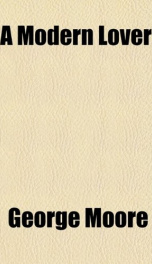
a modern lover
Series:
Unknown
Year:
Unknown
Raiting:
3.5/5
Purchase of this book includes free trial access to www.million-books.com where you can read more than a million books for free. This is an OCR edition with typos. Excerpt from book: CHAPTER IIL PAINTING A VENUS. He was heaping some more coals on the fire when Gwynnie entered the studio-garret next morning. With one hand she clasped round her shoulders a coarse woollen shawl, with the other she held up her skirts which hung loosely about her. Her feet were bare. She had slept feverishly and fitfully. All night she had been awakened and startled by dreams. Each half hour's sleep had been followed by a long vigil, full of the ardours of plighted and enfeebled by the lassitudes of broken promises. She would have had no difficulty in acting rightly had she known where her duty lay. But there was no one to whom she could turn for a word of advice, and she often got out of bed and prayed in the clear moonlight on her knees for grace. Often she seemed to see her father's face, but it told her little; sometimes it seemed to frown, sometimes to smile, but she found comfort nowhere, save in a voice that told her that we do right when we believe what we are doing is right. " How good of you to come," said Lewis ; " I was afraid that you would change your mind." " Why should we change our minds when we think we are doing right ?" she answered, unaffectedly, but with a desire to excuse her conduct. Both were very much embarrassed. He, even more than she, dreaded the first step, and cowardly tried to put it off by suggesting that she had better wait till the room was warmer; she, on the other hand, having come for a certain purpose, did not understand why it should be delayed. " I think the room is quite warm ; I am ready when you are," she answered, with the faintest tremble in her voice. Lewis placed her in the centre of the room where the light would fall directly upon her, then he arranged his easel in front of her, and stood waiting ; Brav...
Show more
add to favoritesadd In favorites
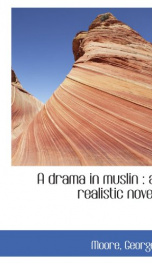
a drama in muslin a realistic novel
Series:
Unknown
Year:
Unknown
Raiting:
4/5
This volume is produced from digital images created through the University of Michigan University Library's large-scale digitization efforts. The Library seeks to preserve the intellectual content of items in a manner that facilitates and promotes a variety of uses. The digital reformatting process results in an electronic version of the original text that can be both accessed online and used to create new print copies. The Library also understands and values the usefulness of print and makes reprints available to the public whenever possible. This book and hundreds of thousands of others can be found in the HathiTrust, an archive of the digitized collections of many great research libraries. For access to the University of Michigan Library's digital collections, please see http://www.lib.umich.edu and for information about the HathiTrust, please visit http://www.hathitrust.org
Show more
add to favoritesadd In favorites

Vain Fortune
Series:
Unknown
Year:
Unknown
Raiting:
3.5/5
With Five Illustrations By Maurice Greiffenhagen
Show more
add to favoritesadd In favorites
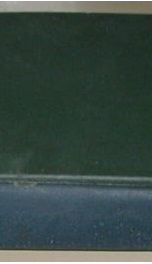
Spring Days
Series:
Unknown
Year:
Unknown
Raiting:
2.5/5
George Augustus Moore (1852-1933) was an Irish novelist, short story writer, poet, art critic, memoirist and dramatist. His first book, a collection of poems called The Flowers of Passion, had appeared in 1878 and a second collection, Pagan Poems, followed in 1881. His first novel, A Modern Lover (1883), was banned in England because of its, for the times, explicit portrayal of the amorous pursuits of its hero. His next book, A Mummer's Wife (1885) is widely recognized as the first major novel in the realist style in the English language. Other realist novels by Moore from this period include Esther Waters (1894), the story of an unmarried housemaid who becomes pregnant and is abandoned by her footman lover, and A Drama in Muslin (1886), a satiric story of the marriage trade in Anglo-Irish society. His 1887 novel A Mere Accident is an attempt to merge his symbolist and realist influences. He also published a collection of short stories: Celibates (1895). In 1913, he traveled to Jerusalem to research background for his novel The Brook Kerith: A Syrian Story (1916). --This text refers to an alternate Paperback edition.
Show more
add to favoritesadd In favorites
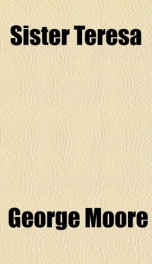
Sister Teresa
Series:
Unknown
Year:
Unknown
Raiting:
3.5/5
Purchase of this book includes free trial access to www.million-books.com where you can read more than a million books for free. This is an OCR edition with typos. Excerpt from book: admission that others had been in the room. But it did seem as if these nuns had intervened. He exclaimed against the folly of his thoughts, and wandered on. He eventually turned into a club in hopes of finding Harding. chapter{Section 4n Mebat had come downstairs to tell her mistress that a pair of stockings were missing. But Evelyn did not answer her, and she hoped the footman would not bring the lamp yet. " You must have left them at your father's. If you will write to-night . . ." " No, Herat, I did not leave them at my father's. I left them at the convent." She wished her maid to know that her relations with Sir Owen would be different from thenceforth, and it seemed to her that a mention of the convent would be sufficient for the moment. Better the truth than ugly rumours that Owen had left her for another woman, or that she had left him for another man. She wished Herat would leave her, but Merat was much interested in her mistress's visit to the convent; and Evelyn was surprised to find that her maid's ideas regarding a vocation were more simple and explicit than her own. " There are those," she said, " who slip away from life when they are very young, before life has fairly caught them, and those who have had a disappointment, and feel there is nothing else for them." " But you, miss, you could never live their life; you are too old, or not old enough." And when Herat left her, Evelyn considered how she had discovered two instincts in herself, an inveterate sensuality and a sincere aspiration for a spiritual life. Which would survive ? As she sat over the fire pondering, there came to her what seemed like a third revelationthat the sexual trouble was but the surface of her nature, that beyond it there was a deeper nature whose depths were yet unsound...
Show more
add to favoritesadd In favorites
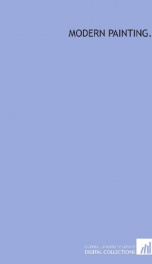
Modern Painting
Series:
Unknown
Year:
Unknown
Raiting:
4.5/5
Originally published in 1904. This volume from the Cornell University Library's print collections was scanned on an APT BookScan and converted to JPG 2000 format by Kirtas Technologies. All titles scanned cover to cover and pages may include marks, notations and other marginalia present in the original volume.
Show more
add to favoritesadd In favorites

Mike Fletcher
Series:
Unknown
Year:
Unknown
Raiting:
4.5/5
Originally published in 1889. This volume from the Cornell University Library's print collections was scanned on an APT BookScan and converted to JPG 2000 format by Kirtas Technologies. All titles scanned cover to cover and pages may include marks notations and other marginalia present in the original volume.
Show more
add to favoritesadd In favorites
What readers are saying
What do you think? Write your own comment on this author!
write a commentGenre
- Books
- Nonfiction / Politics / General
- Biographies & Memoirs / General AAS
- Literature & Fiction / Contemporary
- Books / Alcott, Louisa May
- Law / Canada
- Nonfiction / Education / Education Theory / History
- Books / Domestic fiction
- Literature & Fiction / Authors, A-Z / ( J ) / Joyce, James / General
- Health, Mind & Body / Sex
if you like Moore George try:
readers also enjoyed
What readers are saying
What do you think? Write your own comment on this author!
write a commentGenre
- Books
- Nonfiction / Politics / General
- Biographies & Memoirs / General AAS
- Literature & Fiction / Contemporary
- Books / Alcott, Louisa May
- Law / Canada
- Nonfiction / Education / Education Theory / History
- Books / Domestic fiction
- Literature & Fiction / Authors, A-Z / ( J ) / Joyce, James / General
- Health, Mind & Body / Sex
if you like Moore George try:
readers also enjoyed
Do you want to read a book that interests you? It’s EASY!
Create an account and send a request for reading to other users on the Webpage of the book!

